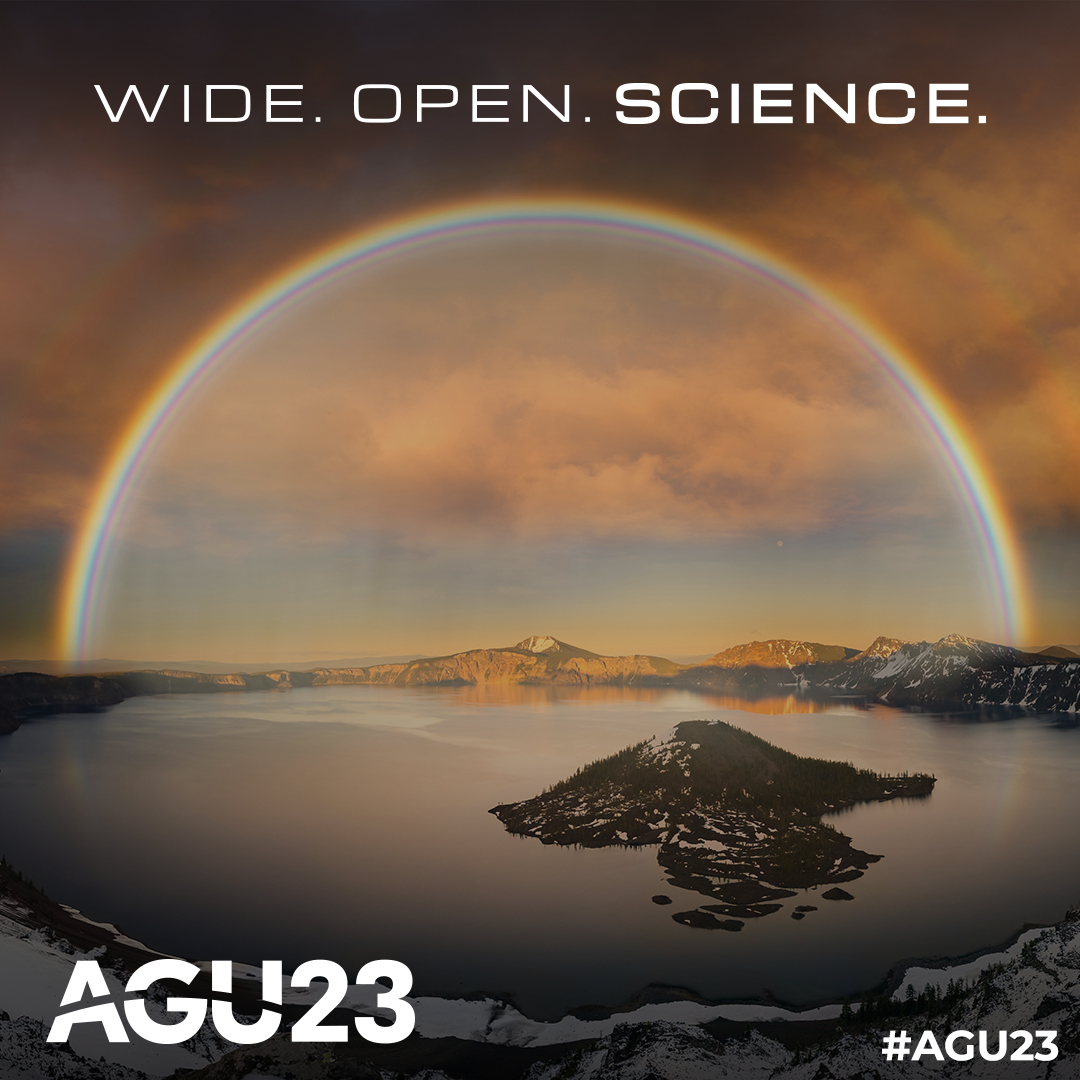 The 2023 American Geophysical Union (AGU) Fall Meeting will be held from December 11 to 15 in San Francisco, California, as well as online. With more than 25,000 attendees expected, the meeting might feel overwhelming. We make it easy for you to find ARM-relevant science, meet up with colleagues, and discover new connections during the event.
The 2023 American Geophysical Union (AGU) Fall Meeting will be held from December 11 to 15 in San Francisco, California, as well as online. With more than 25,000 attendees expected, the meeting might feel overwhelming. We make it easy for you to find ARM-relevant science, meet up with colleagues, and discover new connections during the event.
Below is a list of ARM-related AGU meeting highlights (all times Pacific). Information is subject to change; please check the AGU Fall Meeting website for the most up-to-date information. Follow us on X (formerly Twitter) and Facebook for a real-time guide to relevant activities using the hashtags #ARMAGU and #AGU23.
Discover more ARM-related presentations and posters, as well as sessions, talks, and posters related to Atmospheric System Research (ASR).
Add your presentation to be featured on the ARM or ASR presentation web pages.
Attending AGU in person? Make sure to visit the ARM booth (#614) and ASR at the U.S. Department of Energy’s (DOE) Office of Science Biological and Environmental Research (BER) program booth (#414) in the AGU exhibition hall. There you can view facility materials and meet with ARM representatives.
NEW: AGU continues virtually in January: AGU will hold poster sessions and select invited panels, town halls, and workshops the week of January 20–25. All events will be online. Separate registration is required for the workshops. Check the AGU schedule for more information.
Ignite@AGU
DOE ASR Program Manager Jeff Stehr will present “Building a Career in Science with Improv Comedy” as part of Ignite@AGU on Wednesday, December 13, at 6 p.m. at the Great American Music Hall, 859 O’ Farrell Street, San Francisco.
Ignite@AGU enables scientists to showcase their professional and personal interests through fast, creative presentations. The aim is to inspire, share, and make connections—to ignite conversation. It is not your average research talk.
Agency Lecture
DOE Undersecretary for Science and Innovation Geraldine (Geri) Richmond will lead the AGU featured plenary lecture on Thursday, December 14, from 2:10 to 3:10 p.m. at Moscone Center, Room 201–202 (South, Level 2).
Check out ARM-Related Presentations:
Town Halls
ARM-Related Town Halls
- TH23L: Accelerate Your Research by Leveraging the Power of Multiple Scientific User Facilities Through One Competitive Proposal: Learn About the Facilities Integrating Collaborations for User Science (FICUS) Program
Tuesday, December 12, 1–2 p.m., Moscone Center, Room 2016 (West, Level 2)
Primary Contact: Linda Isakson, Pacific Northwest National Laboratory
Presenters: Rolanda Jundt, Pacific Northwest National Laboratory; Massie Ballon, Lawrence Berkeley National Laboratory
Other DOE Earth and Environmental Systems Sciences Division Town Halls
- TH15D: The Rapidly Changing Landscape of Energy-Water Connections: Opportunities Spanning Science to Applications at the U.S. Department of Energy
Monday, December 11, 6:30–7:30 p.m., Moscone Center, Room 2008 (West, Level 2)
Primary Contact: Charles Scaife, DOE
Presenters: Bob Vallario and Charles Scaife, DOE
- TH23C: DOE’s Strategic Development in Coastal Research: Advancing a Coupled Model-Experiment Research Approach in U.S. Coastal Zones
Tuesday, December 12, 1–2 p.m., Moscone Center, Room 2018 (West, Level 2)
Primary Contact: Daniel B. Stover, DOE
Presenters: Renu Joseph, Brian Benscoter, Bob Vallario, and Sally A. McFarlane, DOE
- TH25B: E3SM: A Decade of Earth System Modeling Effort at the Department of Energy
Tuesday, December 12, 6:30–7:30 p.m., Moscone Center, Room 2005 (West, Level 2)
Primary Contact: Xujing Davis, DOE
Presenters: Gerald L. Geernaert, DOE; David Bader and Renata McCoy, Lawrence Livermore National Laboratory; L. Ruby Leung, Pacific Northwest National Laboratory; Mark A. Taylor, Sandia National Laboratories
- TH43O: Building a More Diverse Scientific Community: Emerging Opportunities in DOE’s Office of Science and Biological and Environmental Research Program
Thursday, December 14, 1–2 p.m., Moscone Center, Room 3001 (West, Level 3)
Primary Contact: Brian Benscoter, DOE
Presenters: Brian Benscoter, Jeff Stehr, Daniel B. Stover, Boris Wawrik, and Asmeret Asefaw Berhe, DOE
- TH45E: Opportunities for Engagement in Extreme Events Research: Promoting Open Science Awareness from DOE’s Earth and Environmental System Modeling Program
Thursday, December 14, 6:30–7:30 p.m., Moscone Center, Room 2010 (West, Level 2)
Primary Contact: Renu Joseph, DOE
Presenters: Gerald L. Geernaert, Xujing Davis, Bob Vallario, and Renu Joseph, DOE; L. Ruby Leung, Pacific Northwest National Laboratory; William Drew Collins, Lawrence Berkeley National Laboratory/University of California Berkeley; Paul Aaron Ullrich, Lawrence Livermore National Laboratory
Related Interagency Town Halls
- TH13B: Building Collaborations to Advance Arctic Research: An Update on the U.S. Arctic Research Plan
Monday, December 11, 1–2 p.m., Moscone Center, Room 2002 (West, Level 2)
Primary Contact: Liz Weinberg, Interagency Arctic Research Policy Committee
Presenters: Larry Hinzman, White House Office of Science and Technology Policy; Elizabeth Embury Hoy, NASA Goddard Space Flight Center; Renu Joseph, DOE; Sarah J. Tucker, NOAA
- TH13D: A Discussion with Program Managers for Early-Career Scientists
Monday, December 11, 1–2 p.m., Moscone Center, Room 2008 (West, Level 2)
Primary Contact: Alyssa M. Stansfield, Colorado State University
Presenters: Virginia Selz, NOAA; Benjamin Brown-Steiner, National Science Foundation; Jeff Stehr, DOE; Jared Keith Entin, NASA
- TH35F: AmeriFlux Town Hall: Enhancing the Impact of Flux Science for the World
Wednesday, December 13, 6:30–7:30 p.m., Moscone Center, Room 2003 (West, Level 2)
Primary Contact: Margaret S. Torn, Lawrence Berkeley National Laboratory
Presenters: Margaret S. Torn, Sébastien Biraud, You-Wei Cheah, Trevor F. Keenan, and Koong Yi, Lawrence Berkeley National Laboratory; James Michael Kuperberg, White House Office of Science and Technology Policy; Dario Papale, University of Tuscia; Daniel B. Stover, DOE; Enrique R. Vivoni, Arizona State University
- TH45A: Accelerating Applications and Collaborations in Interagency Integrated Research of the Water Cycle to Inform Water Management Under Global Change
Thursday, December 14, 6:30–7:30 p.m., Moscone Center, Room 2002 (West, Level 2)
Primary Contact: Yishen Li, U.S. Global Change Research Program
Presenters: Patrick M. Reed, Cornell University; Jin Huang, NOAA; Renu Joseph and Bob Vallario, DOE; Fred L. Ogden, NOAA/National Weather Service; Jared Keith Entin, NASA; David P. Lesmes, U.S. Geological Survey
Invited Presentations
Please note: On average, each presentation is scheduled to run no longer than five minutes, so the full session times are listed below for planning purposes.
- A13L-2312: Quantifying the Thermodynamic Impacts on the Atmospheric Boundary Layer Due to the Sea Breeze in the Coastal Houston Region. Francesca M. Lappin, University of Oklahoma.
Monday, December 11, 2:10–6:30 p.m., Moscone Center, Poster Hall A–C (South, Exhibition Level)
- A14A-06: Insights into the chemistry of biogenic secondary organic aerosol formation from chemical classification of “unknown” species in laboratory oxidation experiments and ambient datasets. Lindsay Yee, University of California Berkeley.
Monday, December 11, 4–5:30 p.m., Moscone Center, Room 3009 (West, Level 3)
- A23B-01: A combined cloud chamber and single-particle micro-spectroscopic investigation of soil-dust particles serving as ice-nucleating particles. Daniel Alexander Knopf, Stony Brook University.
Tuesday, December 12, 2:10–3:40 p.m., Moscone Center, Room 3005 (West, Level 3)
- A33C-06: The production, emission, and subsequent chemistry of marine reactive trace gases: Insights from combined laboratory and field studies. Timothy H. Bertram, University of Wisconsin–Madison.
Wednesday, December 13, 2:10–3:40 p.m., Moscone Center, Room 3006 (West, Level 3)
- A33B-02: Coupling between cloud and land surface changes aerosol-cloud interactions. Tianning Su, University of Maryland, College Park.
Wednesday, December 13, 2:10–3:40 p.m., Moscone Center, Room 3004 (West, Level 3)
- A41M-2808: In situ sampling of aerosol-cloud interactions during the Southern California Interactions of Low cloud and Land Aerosol (SCILLA) airborne experiment. Mikael Witte, Naval Postgraduate School.
Thursday, December 14, 8:30 a.m.–12:50 p.m., Moscone Center, Poster Hall A–C (South, Exhibition Level)
- A43D-01: Boundary-Layer Evolution In a Coastal Urban Environment. Petra Maria Klein, University of Oklahoma.
Thursday, December 14, 2:10–3:40 p.m., Moscone Center, Room 3002 (West, Level 3)
- A44A-01: Sea ice, snow caps, and freshwater lenses: The hurdles local Arctic aerosols must overcome to become airborne.
Jessie Creamean, Colorado State University.
Thursday, December 14, 4–5:30 p.m., Moscone Center, Room 3000 (West, Level 3)
- H44C-04: Aerosol Measurements for Integrated Mountainous Hydroclimate Processes in the Upper Colorado River Basin.
Allison C. Aiken, Los Alamos National Laboratory.
Thursday, December 14, 4–5:30 p.m., Moscone Center, Room 3014 (West, Level 3)
- H44C-08: The observed and simulated temperature structure in the atmospheric boundary layer in the East River Valley during the seasonal snow-cover change. Bianca Adler, NOAA/Cooperative Institute for Research in Environmental Sciences.
Thursday, December 14, 4–5:30 p.m., Moscone Center, Room 3014 (West, Level 3)
Featured Field Campaign Presentations
Eastern Pacific Cloud Aerosol Precipitation Experiment (EPCAPE)
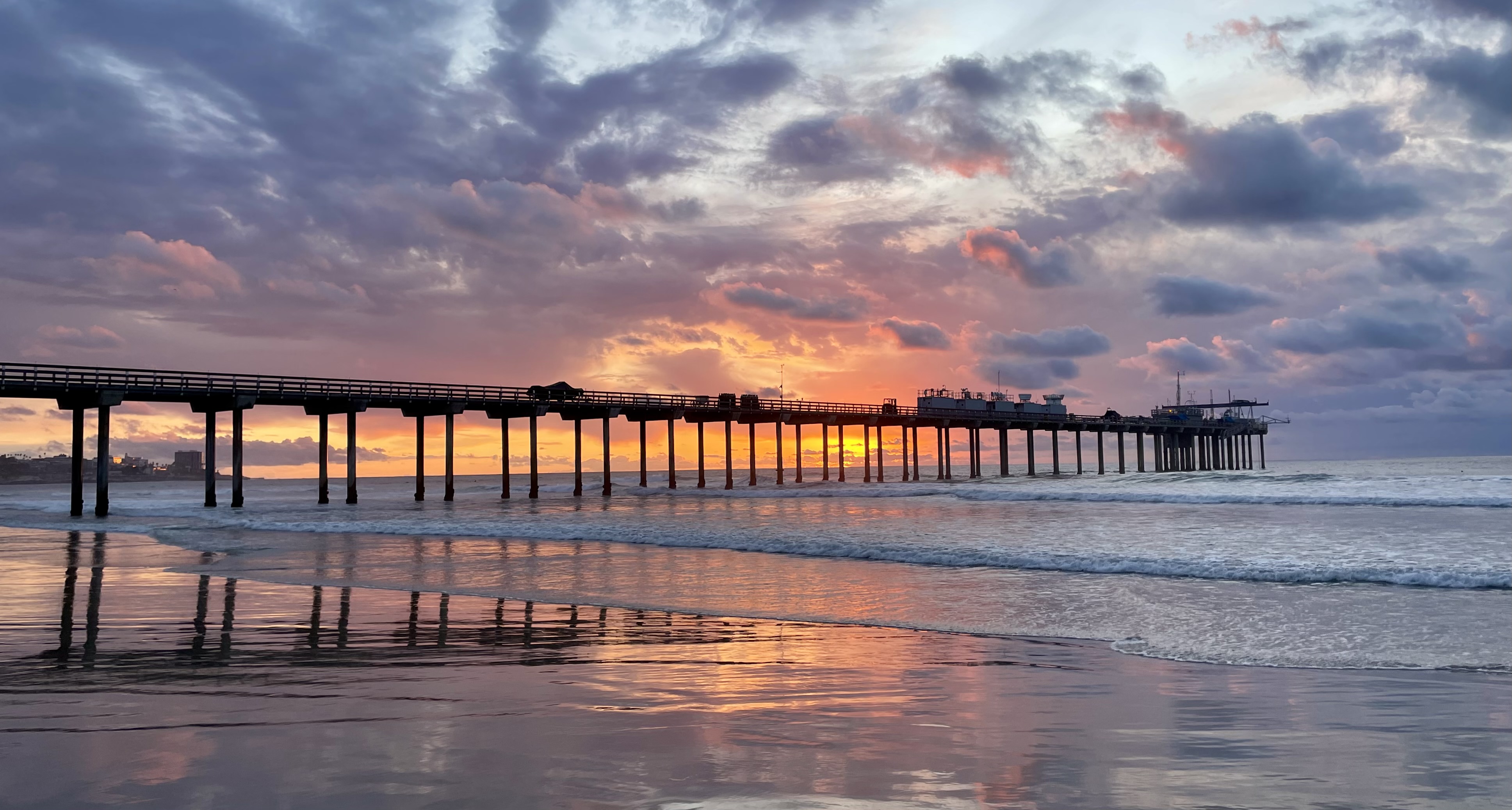
The Eastern Pacific Cloud Aerosol Precipitation Experiment (EPCAPE), which kicked off in La Jolla, California, in February 2023 and is set to close operations in February 2024, will explore aerosol indirect effects on stratocumulus clouds to help improve their representation in earth system models. EPCAPE includes the deployment of the first ARM Mobile Facility on the Ellen Browning Scripps Memorial Pier and a scanning cloud radar on Mount Soledad less than a mile inland.
As part of EPCAPE, researchers will also investigate how pollution from the nearby Los Angeles metropolitan area affects marine aerosols and, by extension, the clouds near San Diego.
- POSTER SESSION—A41M: Cloud-Aerosol and Aerosol-Cloud-Precipitation-Radiation Interactions in Warm Clouds
Thursday, December 14, 8:30 a.m.–12:50 p.m., Moscone Center, Poster Hall A–C (South, Exhibition Level)
Reported EPCAPE presentations:- A41M-2808: In situ sampling of aerosol-cloud interactions during the Southern California Interactions of Low cloud and Land Aerosol (SCILLA) airborne experiment (Invited). Mikael Witte, Naval Postgraduate School.
- A41M-2811: An integrated airborne-satellite perspective on aerosol-cloud interactions during a mesoscale eddy event over the Southern California Bight. Sierra Bollinger, Naval Postgraduate School.
- A41M-2814: Size-Resolved CCN Activity of Cloud Droplet Residuals during the Eastern Pacific Cloud Aerosol Precipitation Experiment. Elavarasi Ravichandran, University of California, Riverside.
- A41M-2815: Differences between In-Cloud and Out-of-Cloud Composition of Individual Particles and their Submicron Mass during EPCAPE. Abigail Williams, University of California San Diego.
- A41M-2821: The OH Burst from Aerosols during the Eastern Cloud Aerosol Precipitation Experiment (EPCAPE) Campaign. Catherine Banach, University of California Los Angeles.
- eLIGHTNING SESSION—A53Q: Air Quality Trends and Challenges in Urban Area VI
Friday, December 15, 2:10–3:40 p.m., Moscone Center, eLightning Theater I, Hall D (South, Exhibition Level)
Reported EPCAPE presentations:- A53Q-04: Correlation Between Black Carbon and Aerosol Organic Functional Groups From Primary Vehicle Emissions in Coastal Regions during EPCAPE. Nattamon Maneenoi, Scripps Institution of Oceanography at the University of California San Diego.
Surface Atmosphere Integrated Field Laboratory (SAIL)

The Surface Atmosphere Integrated Field Laboratory (SAIL) field campaign, which operated from September 2021 to June 2023, took place in the 300-square-kilometer (116-square-mile) East River Watershed near Crested Butte, Colorado. As part of SAIL, a portable ARM observatory provided valuable atmospheric data that researchers can use to develop detailed measurements of mountainous water-cycle processes pertaining to the Colorado River, which supplies water for 40 million people in the Western United States.
Through SAIL, researchers from national laboratories, universities, research centers, and agencies will enable an atmosphere-through-bedrock understanding of mountainous water cycles.
- ORAL SESSION—A14A: Biosphere-Atmosphere Interactions of Reactive Carbon, Oxidants, and Aerosols I
Monday, December 11, 4–5:30 p.m., Moscone Center, Room 3009 (West, Level 3)
Reported TRACER presentations:- A14A-07: Supermicron and Bioaerosol Seasonal Regimes and Interactions within Mountainous Terrain. Allison C. Aiken, Los Alamos National Laboratory.
SAIL’s lead scientist, Daniel Feldman, will be the primary convener of the following SAIL-related AGU sessions:
- POSTER SESSION—H41J: Atmosphere-Through-Bedrock Observations, Modeling, and Science in the Upper Colorado River Basin I
Thursday, December 14, 8:30 a.m.–12:50 p.m., Moscone Center, Poster Hall A–C (South, Exhibition Level)
Reported SAIL presentations:- H41J-1888: An Analytical Model of Snow Temperature Profile Forced by Solar Radiation. Jingfeng Wang, Georgia Institute of Technology.
- H41J-1889: Developing outreach and educational tools and opportunities for the Sublimation of Snow (SOS) project. Emilio Ian Mateo, Aspen Global Change Institute.
- H41J-1890: Linking Daily Cycles of Streamflow, Energy, and ET in the Mountain Boundary Layer. William J. Rudisill, Lawrence Berkeley National Laboratory.
- H41J-1891: Observations of diurnal and seasonal variation of heat fluxes and an evaluation of bulk Richardson parameterization in the East River Watershed, Colorado. Sreenath Paleri, University of Oklahoma/NOAA.
- H41J-1892: Meteorological Measurements Using a Novel High-Density Thermodynamic Device. Ryan Szczerbinski, University of Utah.
- H41J-1893: Microphysical Cross-validation of the ARM Ka-band Radar (KAZR) and Dual-polarization X-Band Radar during the SAIL. Sounak Biswas, Colorado State University.
- H41J-1894: Seasonal Impacts of Clouds on Surface Energy Fluxes and Thermodynamics Observed during the SPLASH and SAIL Field Programs. Joseph Sedlar, University of Colorado Boulder/NOAA.
- H41J-1895: Surface Quantitative Precipitation Estimates (SQUIRE) from the X-band precipitation radar during the Surface Integrated Field Laboratory (SAIL) experiment. Robert Clyde Jackson, Argonne National Laboratory.
- H41J-1896: The Analysis Phase of the Surface Atmosphere Integrated Field Laboratory (SAIL) Field Campaign Begins.
Daniel Feldman, Lawrence Berkeley National Laboratory. - H41J-1898: Unraveling the Complexity of Aerosol Composition and Ice Nucleation Potential at Variable Altitudes: A Study from Crested Butte Mountain. Nurun Nahar Lata, Pacific Northwest National Laboratory.
- H41J-1899: Using Coupled Hydrologic and Vegetation Modeling to Understand Mountain Water Budgets with Complex Terrain. Ashley Cao, University of California Berkeley.
- ORAL SESSION—H44C: Atmosphere-Through-Bedrock Observations, Modeling, and Science in the Upper Colorado River Basin II
Thursday, December 14, 4–5:30 p.m., Moscone Center, Room 3014 (West, Level 3)
Reported SAIL presentations:- H44C-01: Spring Precipitation Deficits Impact Streamflow in the Upper Colorado River Basin During the Millennium Drought. Daniel Hogan, University of Washington.
- H44C-02: Climatological perspective and multiscale investigation of a major precipitation event in the Upper Colorado River Basin during late December 2021. Benjamin J. Moore, NOAA.
- H44C-03: Ice Particle Characteristics in High Mountains and Subpolar Regions: A Comparative Study. Veronika Ettrichrätz, University of Leipzig.
- H44C-04: Aerosol Measurements for Integrated Mountainous Hydroclimate Processes in the Upper Colorado River Basin (Invited). Allison C. Aiken, Los Alamos National Laboratory.
- H44C-05: Examining Spectral Albedo Measurements of Snow for Impacts of Aerosol Deposition at the SAIL and SPLASH Campaigns. Laura Riihimaki, Cooperative Institute for Research in Environmental Sciences.
- H44C-06: Springtime observations of surface energy and hydrologic variables over ablating snow in Colorado’s East River Watershed in 2022 and 2023. Christopher Cox, NOAA.
- H44C-07: Measuring sublimation of snow on the valley floor of a Colorado River headwater basin, Winter 2022-23. Eli Schwat, University of Washington.
- H44C-08: The observed and simulated temperature structure in the atmospheric boundary layer in the East River Valley during the seasonal snow-cover change (Invited). Bianca Adler, NOAA/Cooperative Institute for Research in Environmental Sciences.
TRacking Aerosol Convection interactions ExpeRiment (TRACER)
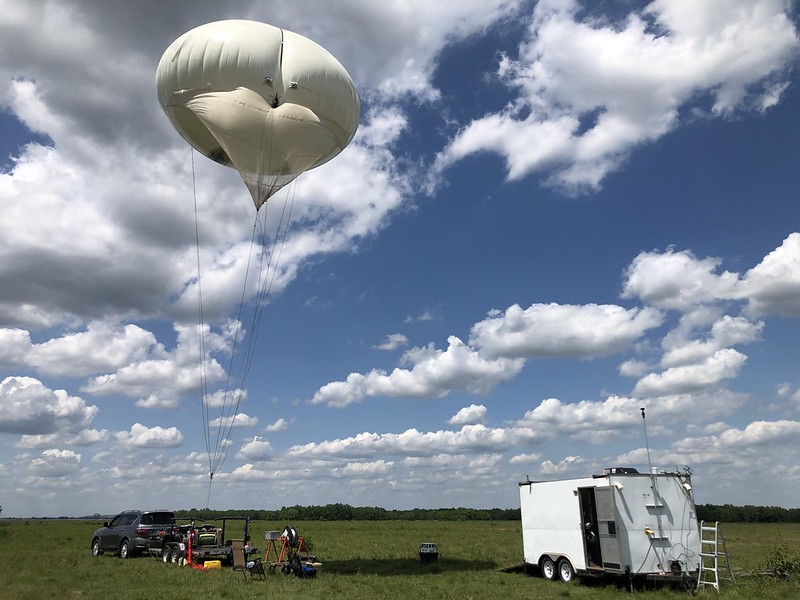
The TRacking Aerosol Convection interactions ExpeRiment (TRACER), which ran from October 2021 through September 2022, provided convective cloud observations with high space and time resolution over a broad range of environmental and aerosol conditions around the Houston, Texas, region.
As part of TRACER, ARM deployed a portable observatory southeast of downtown Houston, a scanning precipitation radar south of downtown, and an ancillary site southwest of the city, where tethered balloon systems were launched. Together, these ARM measurements are helping researchers better understand the variability of aerosols and meteorology between the urban Houston area and surrounding rural environments.
- POSTER SESSION—A11H: Biogenic VOCs: Emissions, Atmospheric Oxidation, and Impacts
Monday, December 11, 8:30 a.m.–12:50 p.m., Moscone Center, Poster Hall A–C (South, Exhibition Level)
Reported TRACER presentations:- A11H-2094: Unveiling spatial distribution of BVOCs across Houston: Insights from TRACER-MAP and TRACER AQ.
Manisha Mehra, Baylor University.
- A11H-2094: Unveiling spatial distribution of BVOCs across Houston: Insights from TRACER-MAP and TRACER AQ.
- POSTER SESSION—A13L: Atmospheric Research Supported by Uncrewed Systems
Monday, December 11, 2:10–6:30 p.m., Moscone Center, Poster Hall A–C (South, Exhibition Level)
Reported TRACER presentations:- A13L-2312: Quantifying the Thermodynamic Impacts on the Atmospheric Boundary Layer Due to the Sea Breeze in the Coastal Houston Region (Invited). Francesca M. Lappin, University of Oklahoma.
- ORAL SESSION—A14A: Biosphere-Atmosphere Interactions of Reactive Carbon, Oxidants, and Aerosols I
Monday, December 11, 4–5:30 p.m., Moscone Center, Room 3009 (West, Level 3)
Reported TRACER presentations:
- POSTER SESSION—A33K: Atmospheric Aerosol Processes and Impacts Across Scales: Insights into Properties, Multiphase Processes, Air Quality, Climate, and Health III
Wednesday, December 13, 2:10–6:30 p.m., Moscone Center, Poster Hall A–C (South, Exhibition Level)
Reported TRACER presentation:- A33K-2702: Vertical distribution of size-resolved aerosol composition and mixing state during TRacking Aerosol Convection interactions ExpeRiment (TRACER): A case study. Zezhen Cheng, Pacific Northwest National Laboratory.
TRACER’s lead scientist, Michael Jensen, will be the primary convener of the following TRACER-related AGU sessions:
- ORAL SESSION—A43D: Clouds, Precipitation, Aerosol, and Air Quality in the Coastal Urban Environment of Southeastern Texas I
Thursday, December 14, 2:10–3:40 p.m., Moscone Center, Room 3002 (West, Level 3)
Reported TRACER presentations:- A43D-01: Boundary-Layer Evolution In a Coastal Urban Environment (Invited). Petra Maria Klein, University of Oklahoma.
- A43D-03: Anthropogenic Influences on Thunderstorms in Coastal Urban Environments. Jean Carlos Pena, University at Albany.
- A43D-04: Variability in convective cell characteristics with thermodynamic and aerosol environments during TRACER.
Anita D. Rapp, Texas A&M University. - A43D-05: Characterization of cloud-forming properties for maritime and continental aerosols across Houston during TRACER. Seth A. Thompson, Texas A&M University.
- A43D-06: Identifying major sources, meteorological impacts, and temporal and spatial trends of trace gas pollutants across the Houston Metropolitan Area during the TRACER AQ Campaigns in 2021 and 2022. Subin Yoon, University of Houston.
- A43D-08: Shallow Convection Characteristics During TRACER and ESCAPE. Zackary Mages, Stony Brook University.
- POSTER SESSION—A51J: Clouds, Precipitation, Aerosol, and Air Quality in the Coastal Urban Environment of Southeastern Texas II
Friday, December 15, 8:30 a.m.–12:50 p.m., Moscone Center, Poster Hall A–C (South, Exhibition Level)
Reported TRACER presentations:- A51J-2047: A Tour of Events of Interest during the TRACER campaign. Michael P. Jensen, Brookhaven National Laboratory.
- A51J-2048: Aerosol Vertical Profile Retrievals Based on Micropulse Lidar and Surface Aerosol Measurements During TRACER Campaign. Bo Chen, Texas A&M University.
- A51J-2049: Characteristics of convective cell evolution using C-band radar high-temporal resolution cell tracking observations at Houston, TX, during the TRACER field campaign. Mariko Oue, Stony Brook University.
- A51J-2050: Characterization of Aerosol Morphology and Chemical Composition During TRACER Campaign: A Case Study.
Ziying Nancy Lei, Texas A&M University. - A51J-2051: Characterization of submicron aerosol composition and hygroscopicity in Houston, TX during TRacking Aerosol Convection interactions ExpeRiment (TRACER) campaign. Maria A. Zawadowicz, Brookhaven National Laboratory.
- A51J-2052: High spatiotemporal variability of deep convective cores during the TRACER and ESCAPE field campaigns.
Pavlos Kollias, Stony Brook University. - A51J-2053: Highlights from a Unique Inter-Agency Collaboration for Weather Forecasting during a Succession of Field Experiments near Houston, TX. Aryeh J. Drager, Brookhaven National Laboratory.
- A51J-2054: Humidity Effects on Ambient Aerosol Optical Properties: Dust, Black Carbon, & Inorganic Aerosol in Houston, TX. James Edward Lee, Los Alamos National Laboratory.
- A51J-2055: Implications of Sea Breeze Circulation on the Atmospheric Aerosol Environment in the Houston Coastal Region. Tamanna Subba, Brookhaven National Laboratory.
- A51J-2056: Lagrangian analysis of isolated convective storms during TRACER from Lightning Mapping Array, and C-SAPR, CSU-CHIVO, and NEXRAD polarimetric radars. Marcus van Lier-Walqui, Columbia University.
- A51J-2057: Lagrangian cell-tracked analysis of NU-WRF simulated polarimetric radar and lightning signals from thunderstorms during TRACER IOP. Kelcy N. Brunner, Texas Tech University.
- A51J-2058: Model Intercomparison Project of Aerosol Indirect Effects on Simulated Convective Events Observed During
TRACER. Stephen Millican Saleeby, Colorado State University. - A51J-2059: Modeling Anthropogenic Influences on Urban Meteorology and Air Quality: Insights from Coastal Urban Environments in the Houston metropolitan region. Harold Gamarro, City College of New York.
- A51J-2060: Ozonesondes during the TRACER IOP. Paul J. Walter, St. Edward’s University.
- A51J-2061: Role of Urban-rural Contrast in the Isolated Deep Convective Clouds during TRACER IOP (iPoster only). Jingyi Chen,
Pacific Northwest National Laboratory. - A51J-2063: Volatile Organic Compound Composition Amid Ozone Enhancement During TRACER-AQ2 in Houston, Texas. Meghan Guagenti, Baylor University.

 The Atmospheric Radiation Measurement (ARM) user facility’s
The Atmospheric Radiation Measurement (ARM) user facility’s  The Atmospheric Radiation Measurement (ARM) user facility and Atmospheric System Research (ASR) want to know about your presentations at the upcoming American Meteorological Society (AMS) annual meeting.
The Atmospheric Radiation Measurement (ARM) user facility and Atmospheric System Research (ASR) want to know about your presentations at the upcoming American Meteorological Society (AMS) annual meeting.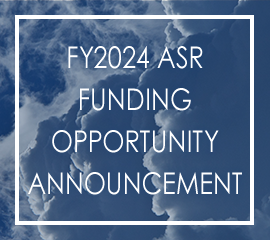 The U.S. Department of Energy (DOE) has announced that $12 million is available for new research grants for
The U.S. Department of Energy (DOE) has announced that $12 million is available for new research grants for 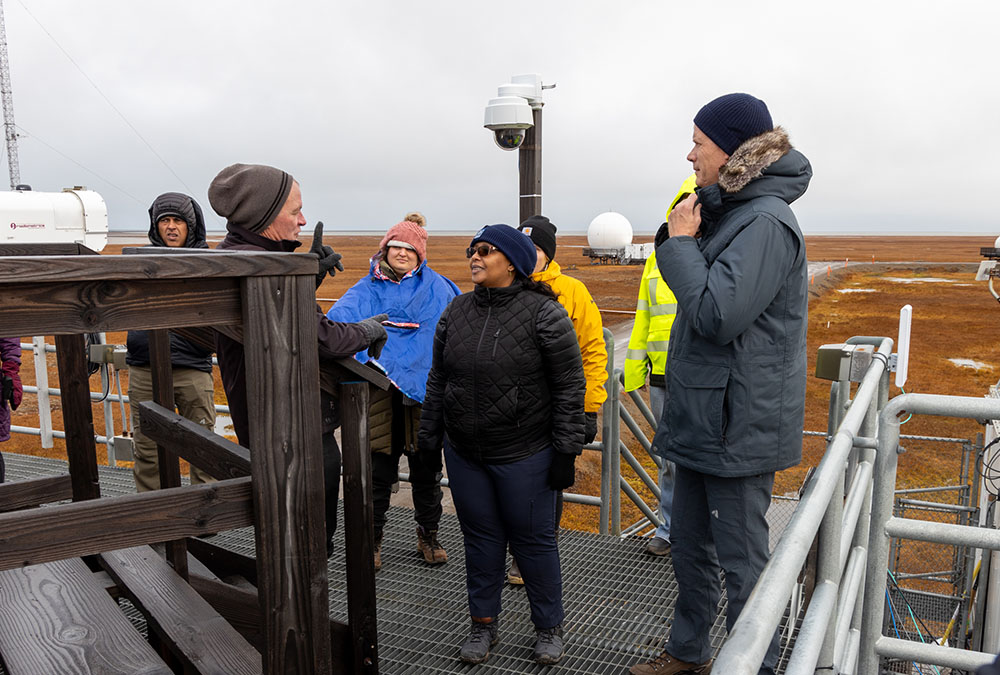




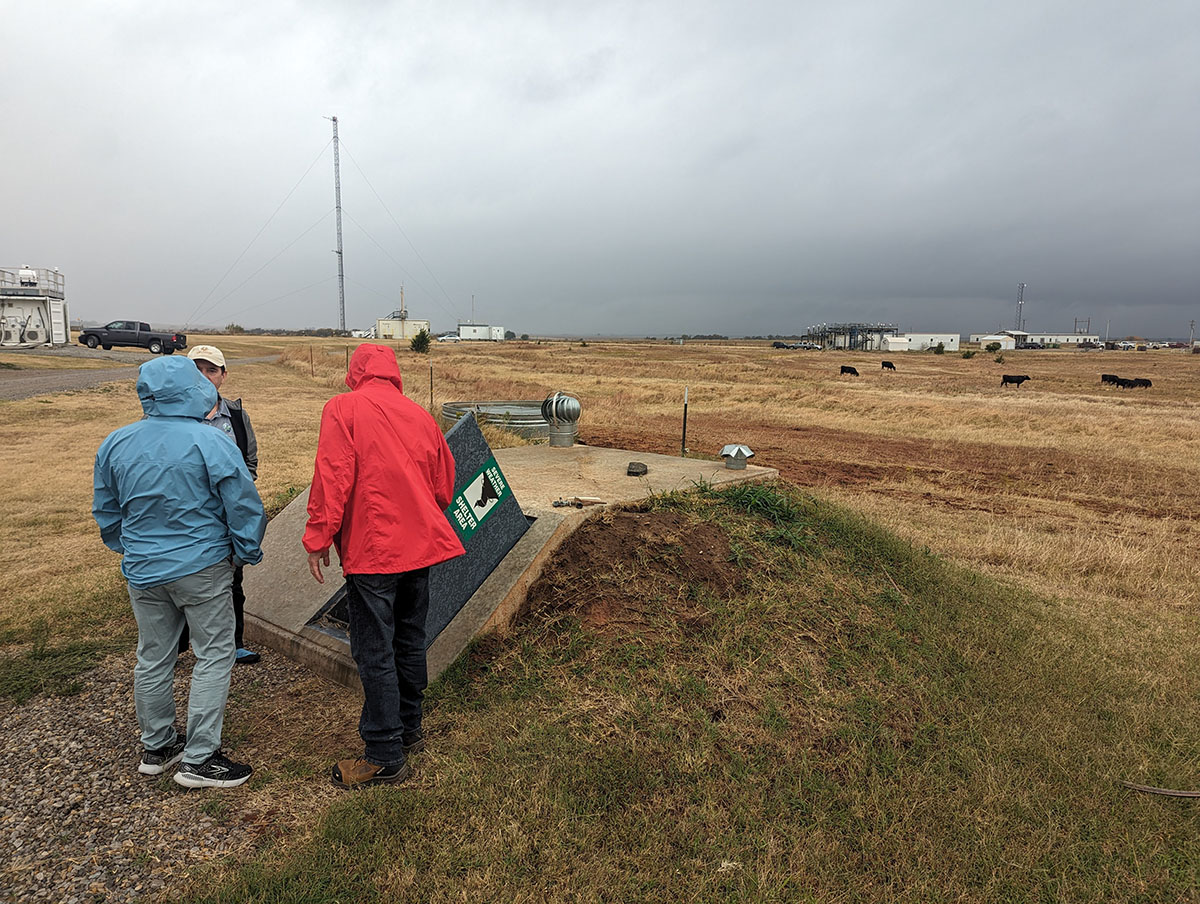
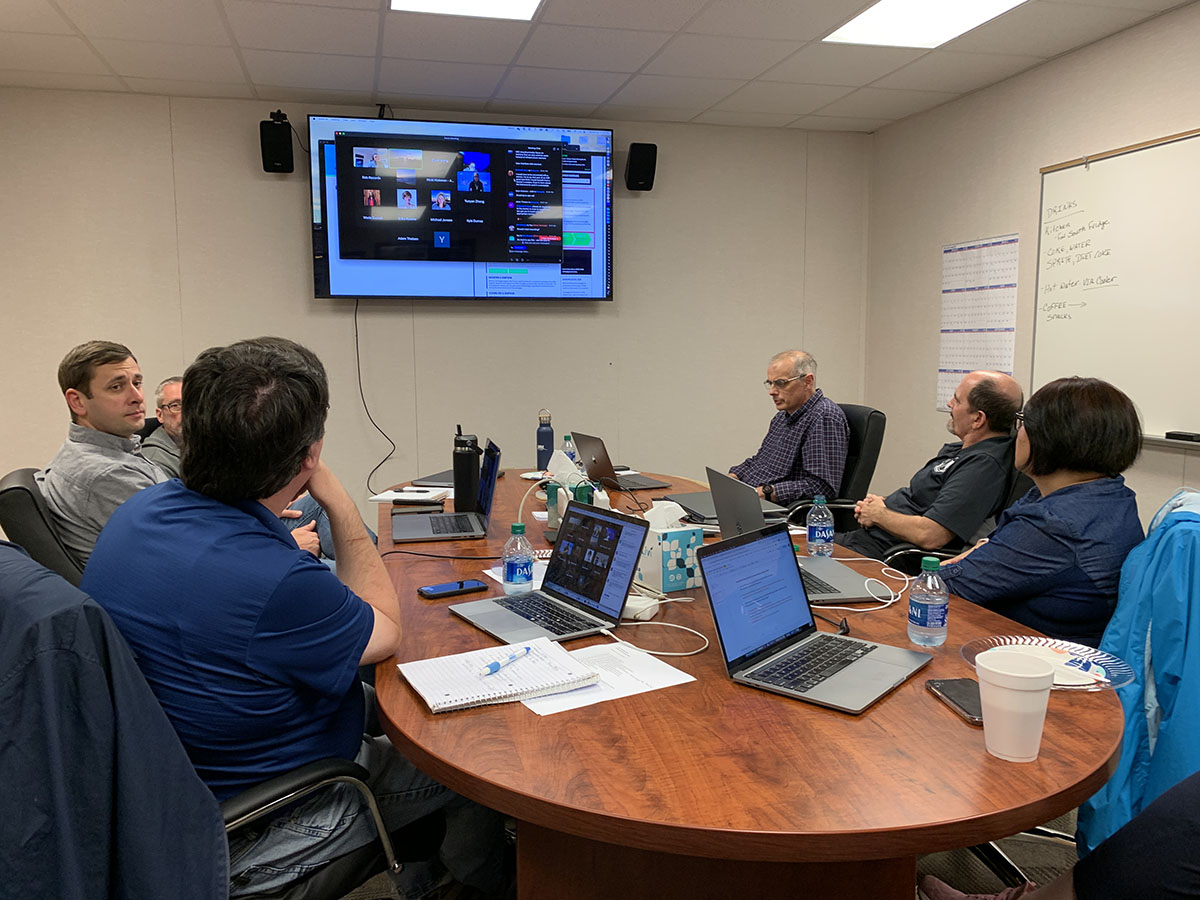
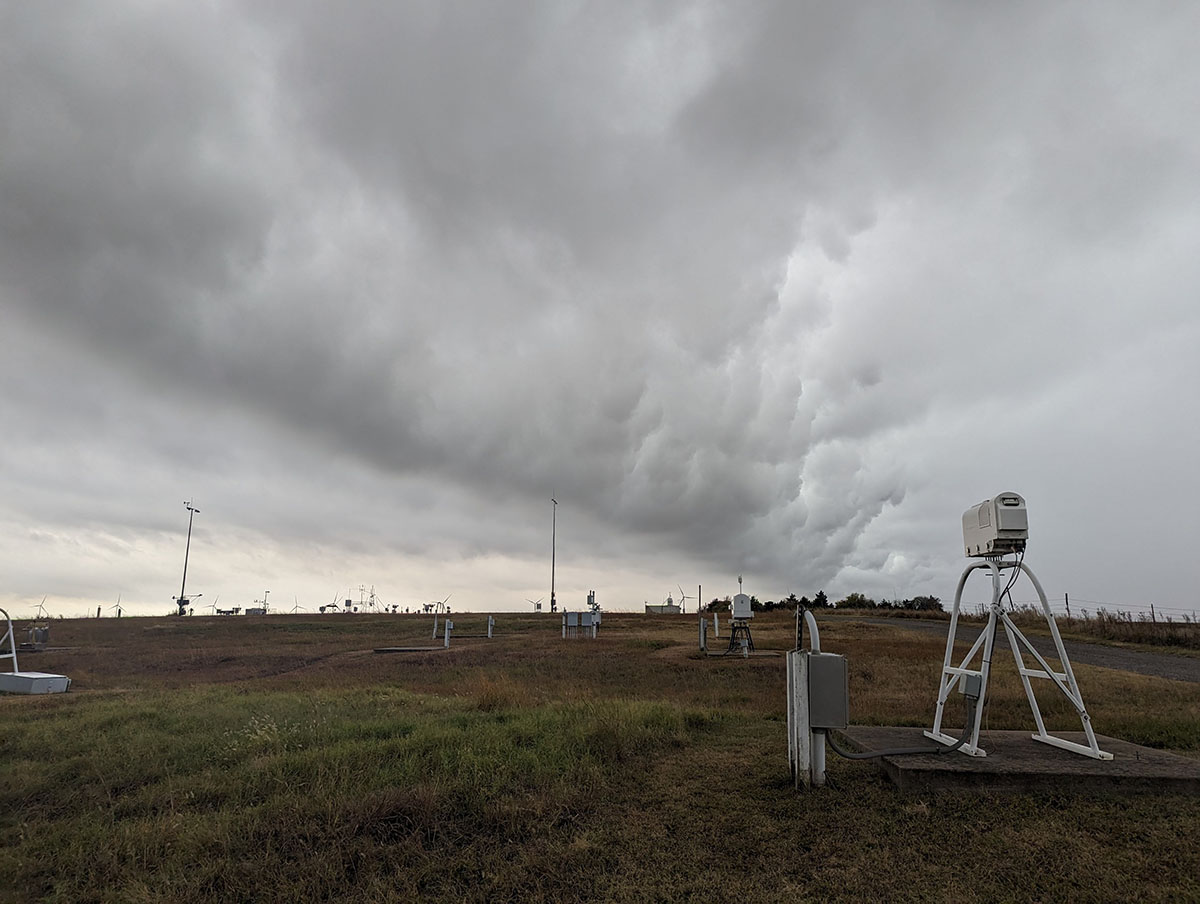
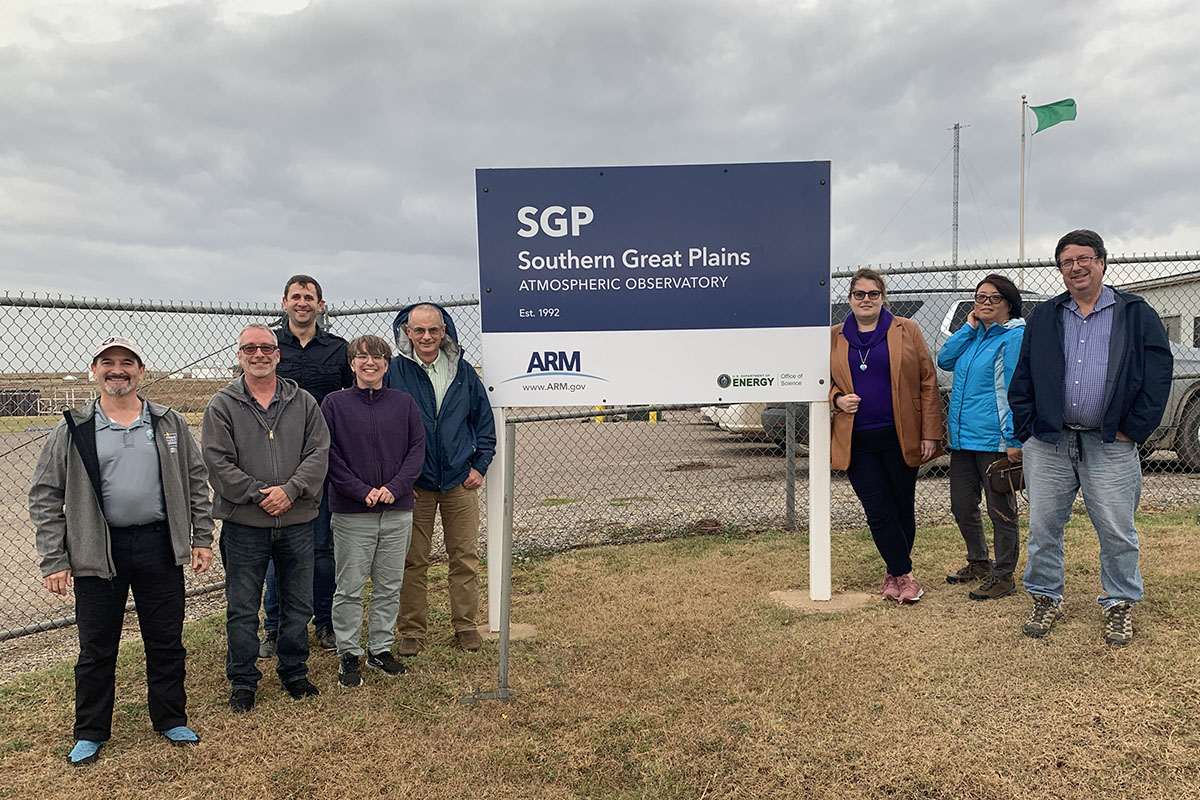
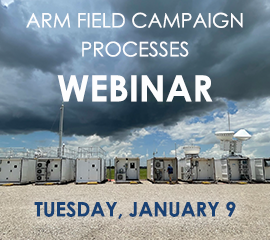 The Atmospheric Radiation Measurement (ARM) user facility is currently accepting preliminary proposals for field campaigns that require the deployment of the first or second
The Atmospheric Radiation Measurement (ARM) user facility is currently accepting preliminary proposals for field campaigns that require the deployment of the first or second 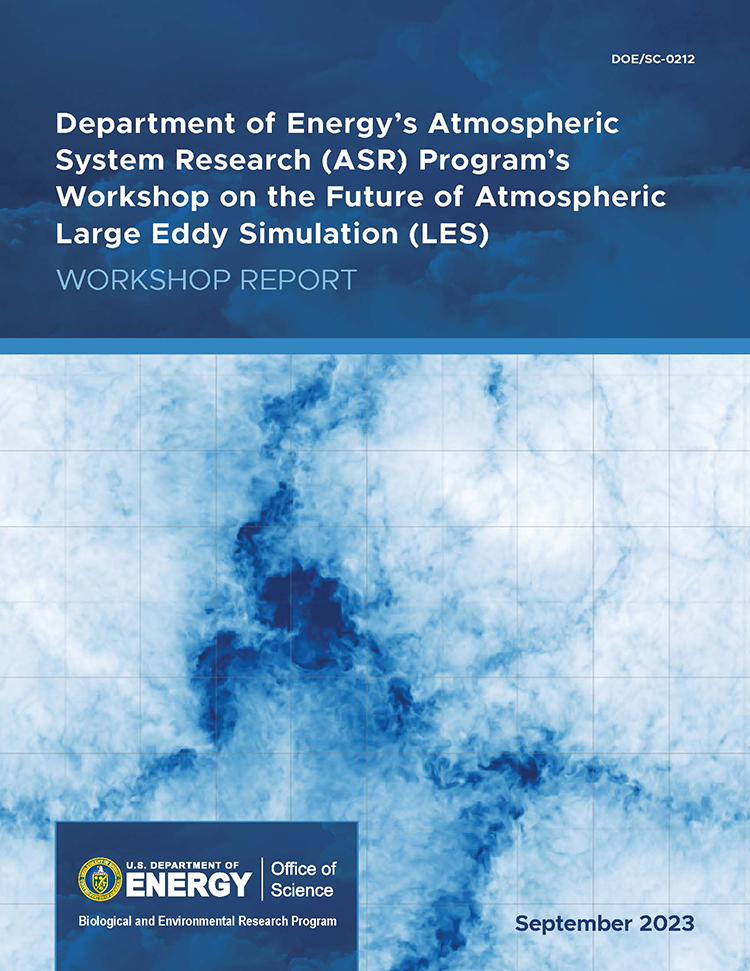
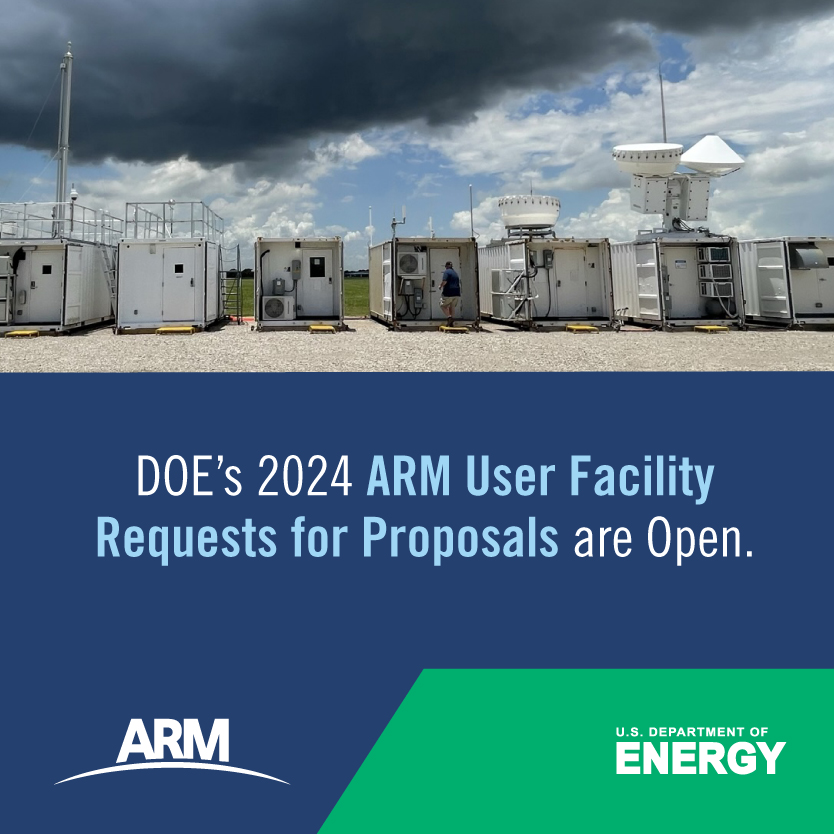 The Atmospheric Radiation Measurement (ARM) user facility, supported by the U.S. Department of Energy’s (DOE’s) Office of Science, is now accepting preliminary proposals from scientists to deploy an
The Atmospheric Radiation Measurement (ARM) user facility, supported by the U.S. Department of Energy’s (DOE’s) Office of Science, is now accepting preliminary proposals from scientists to deploy an